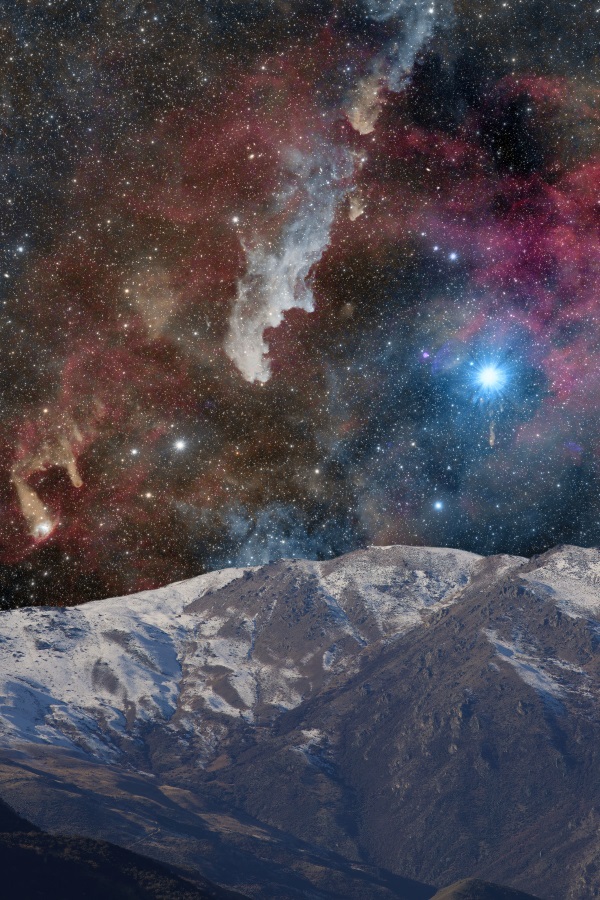Last year was momentous for Māori, when Aotearoa celebrated Matariki — which recognises mātauranga Māori on a national scale — for the very first time. Mana Tāhuna kaiwhakahaere matua (chief operating officer) EBONY WEBSTER explains why it’s important, and why it’s critical the day, and celebrations, remain authentic
Matariki is, and will always be, an important time for us as Māori.
It holds immense cultural significance.
It represents a time of reflection, connection to our ancestors, and celebration of our heritage.
Matariki is a symbol of new beginnings, unity, and the passing on of knowledge and traditions to future generations, fostering a strong sense of identity and belonging.
The recent introduction of a public holiday dedicated to this occasion is truly a milestone.
It is the first public holiday in Aotearoa New Zealand that recognises mātauranga Māori on a national scale, providing an opportunity for our community to come together, reflect on the past year, remember those we have lost, and set intentions for the year ahead.
As kaiwhakahaere matua (chief operating officer) of Mana Tāhuna — an organisation at the grassroots of our community — we acknowledge our responsibility to step up and take a leadership role in celebrations for our hapori (community).
At its core, Matariki is a time for reflection, renewal, and connection.
Matariki is also a time for everyone in our community togather, connect, and strengthen our cultural identity.
That is why it is super-important for Mana Tāhuna, being one of the only kaupapa Māori organisations in Queenstown, to lead celebrations.
It is vital in making sure that we as Māori exercise self-determination and take ownership of our cultural practices.
We are also ensuring revitalisation of our ahurea (cultural identity), our reo and tikanga, educating and creating awareness for our hapori, while remaining culturally authentic.
In a rohe (region) that is known as having a very small Māori population, it is even more important for us to create and celebrate kaupapa to acknowledge these dates.
By acknowledging Matariki, we pave the way for future generations to embrace their Māori heritage with pride and confidence.
However, as Matariki grows in prominence, it is important that we all observe a healthy level of scepticism, ensuring these events uphold tikanga to maintain cultural authenticity.
It is not a time for opportunistic capitalism.
In the 12 months since its introduction we have already seen a grotesque proliferation of businesses utilising the occasion to create their own ‘Matariki specials’ or market weekend shopping bonanzas.
If, instead, you would like to experience Matariki with a kaupapa Māori organisation, I invite you to spend this evening with us, the whānau of Mana Tāhuna.
We are hosting our annual Matariki event at the Queenstown Memorial Centre from 6pm — it’s an immersive cultural experience that seeks to bring our whole hapori closer to the true meaning of Matariki.
Prepare to be serenaded by the musical prowess of the renowned Modern Māori Quartet, while experiencing the raw power of kapa haka performances from Queenstown Primary School.
You will also engage with Matariki Pūrakau, and, of course, share some beautiful tapas-style kai that represent the Matariki constellation.
The primary aim of our event is to create a welcoming and inclusive atmosphere where everyone feels comfortable to learn more about Matariki.
It is open to everyone in the community, regardless of cultural background.
We believe that by embracing and celebrating Matariki together, we can forge a stronger sense of unity and mutual respect among us all
and our shared love for our beautiful nation.
Let us gather under the starry skies of Matariki, and come together as a community to celebrate, remember, and set our intentions for the
coming year.
I look forward to welcoming you all to this auspicious occasion and sharing in the spirit of Matariki with Mana Tāhuna.
Puaka explained
While it’s Matariki we’re celebrating, it’s often Puaka we’re looking at.
Because the Matariki constellation sits low in the horizon — just 18 degrees above Coronet Peak at its highest point — it’s pretty tough to see it around Queenstown.
That’s why our rohe (region), like many others in Aotearoa, including Whanganui, Taranaki and parts of the Far North, looks instead to Puaka.
With meanings including ‘dry and shrivelled’, Puaka is representative of the earth around this time and based on its light and shade, Māori can tell whether the next season will be tough or fruitful and, as other stars appear, whether those fruits will be of the sky or sea.




